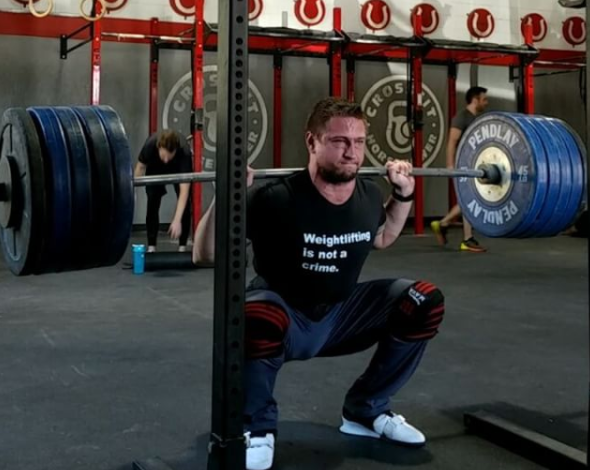
All questions in this quiz are in reference to Essentials of Strength Training & Conditioning (4th edition), Chapter 1: Structure & Function of Body Systems. This quiz displays a few random questions from the question bank so try each quiz multiple times (just reload the page after you finish). Good luck!
Leaderboard: Chapter 1: Structure and Function of Body Systems
Pos.
Name
Entered on
Points
Result
Table is loading
CSCS Study Questions: Structure and Function of Body Systems
Essentials of Strength Training & Conditioning 4th Edition: Chapter 1
The human body is a complex and interconnected system made up of various subsystems that work together to regulate our physical functions and movements. These systems include the muscular, skeletal, cardiovascular, respiratory, nervous, and endocrine systems. Each of these systems performs specific tasks in order to maintain our health and wellbeing, from delivering oxygen to our cells to helping us lift heavy objects. In order to understand how these systems work together to keep us healthy, we must first understand the structure and function of each individual system.
The muscular system is responsible for our ability to move our bodies. It is made up of skeletal muscles, which are attached to our bones and allow us to produce the force necessary for movement. These muscles are activated by the nervous system, which sends signals from the brain to the muscles telling them when to contract. The skeletal system provides support and structure for our bodies. It is made up of bones, which provide a framework for our muscles to attach to and also protect our vital organs. The joints between our bones allow us to move our limbs and allow us to produce force during physical activity.
The cardiovascular system is responsible for transporting oxygen and nutrients throughout the body, while also removing carbon dioxide and metabolic waste products. It consists of the heart, which pumps blood through a network of blood vessels, including arteries, veins, and capillaries. The respiratory system helps provide oxygen to our cells by facilitating gas exchange in the lungs. It is made up of the nose, mouth, pharynx, larynx, trachea, bronchi and lungs. Finally, the nervous system provides us with control over our movements and sensations through a network of neurons that transmit information between body parts and the brain.
All of these systems work together to maintain our health and wellbeing. By understanding the structure and function of each system, we can better understand how they work together to keep us healthy.
The Essentials of Strength Training & Conditioning 4th Edition textbook chapter 1 was written by N. Travis Triplett, Ph.D. These CSCS study questions contain a general overview of basic exercise science, exercise physiology, and human anatomy that will be relevant for taking the Certified Strength and Conditioning Specialist (CSCS) exam. This chapter covers macrostructure and microstructure of muscle and bone, the sarcomere, sliding filament theory, muscle cell activation, muscle fiber types and characteristics, motor units, proprioceptors (muscle spindles and golgi tendon organs) and their purpose, heart anatomy and function, electrocardiogram, blood vessels, the lungs, and air exchange.
Certified Strength and Conditioning Specialists
This website contains Certified Strength Conditioning Specialist CSCS study questions to prepare for the National Strength and Conditioning Association (NSCA) Certified Strength and Conditioning Specialist (CSCS) exam. Certified strength and conditioning specialists are fitness professionals. They are specially trained and experienced in using the application of scientific principles to improve athletic performance. Certified strength and conditioning specialists assist athletes by designing and implementing strength and conditioning programs. Certified strength and conditioning specialists (CSCS) conducting sport-specific performance testing, provide guidance with nutrition, and assist with injury prevention strategies (NSCA, 2015).
Certified Strength and Conditioning Specialist Exam
The Certified Strength and Conditioning Specialist (CSCS) exam by the National Strength and Conditioning Association (NSCA) is a four-hour-long, pencil and paper or computer-based examination. The Certified Strength and Conditioning Specialist exam has two sections: “Scientific Foundations” and “Practical / Applied.” Each of these sections consist of questions that the National Strength and Conditioning Association (NSCA) feels are relevant to test the knowledge and experience of a candidate for the Certified Strength and Conditioning Specialist (CSCS) professional credential. Certified strength conditioning specialist questions in the Scientific Foundations section include anatomy, exercise physiology, biomechanics, and nutrition. Certified strength conditioning specialist questions in the Practical / Applied section include program design, exercise techniques, testing and evaluation, and organization / administration (NSCA, 2015).
Certified Strength Conditioning Specialist CSCS Study Questions
This quiz features CSCS study Questions for Chapter 1 material: Structure and Function of the Muscular, Neuromuscular, Cardiovascular, and Respiratory Systems from Essentials of Strength Training & Conditioning (3rd edition) textbook by Thomas R. Baechle and Roger W. Earle. This is the National Strength and Conditioning Association (NSCA) recommended textbook to prepare for the Certified Strength and Conditioning Specialist (CSCS) exam (NSCA, 2015)
References:
National Strength and Conditioning Association. (2015, June 1). NSCA Certification Handbook. Retrieved from National Strength and Conditioning Association Website: http://www.nsca.com/WorkArea/DownloadAsset.aspx?id=36507225490
National Strength and Conditioning Association. (2015). CSCS Certification. Retrieved from National Strength and Conditioning Association: http://www.nsca.com/CSCS_Certification_2/


